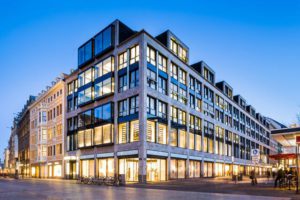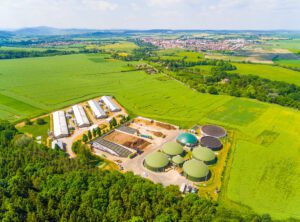As we move into 2024, many businesses around Australia are looking to improve their environmental, social, and corporate governance (ESG) initiative targets, while also reducing their rising energy costs. Facility managers (FMs) are squarely in the target as the people who will help businesses make this happen.
With increasing cost pressures and higher expectations from building occupants and broader stakeholders, facility managers find themselves faced with implementing new operational initiatives – all while reducing their overall spending. Although a challenge, the good news is that both initiatives can be solved by pulling one lever – improved sustainability.
Rising costs and pressures
Approximately 40% of the world’s energy consumption is attributed to buildings[1]. What this means from an emissions reduction standpoint, is that for Australia to reach its environmental and sustainability goals, we need to focus on accelerating our smart and sustainable buildings.
Over the past five years, average energy costs in Australia have increased by around 66%[2]. This sharp increase means facility managers have been tasked with finding efficiencies to reduce the bottom line and help meet sustainability targets. Improved technologies in building automation, energy monitoring, software and analytics can help FMs identify where reductions can be made as well as provide advice based on near real-time data about how to make these changes a reality – resulting in significantly lower utility and maintenance costs. AI-enriched solutions can deliver data-driven guidance empowering teams to act responsibly, efficiently, and quickly, eliminating waste and supporting business objectives.
Better use of data and technology
Incorporating data and unleashing creativity are essential for addressing the greatest challenge of our time – the need to drive sustainability while growing profitability.
Optimising energy use, reducing costs, and improving building performance – these are all made easier by leveraging data, advanced analytics and software. Sustainability goals can be achieved without sacrificing comfort or convenience, and proactive/predictive maintenance can be employed to save costs and improve occupant satisfaction.
Schneider Electric’s EcoStruxure solutions can be leveraged to collect, manage, and share data related to building performance, environmental impact, and resource consumption for example. This data can be leveraged for business insights and automation. It can be used to tweak operations in real-time, or remotely intervene to resolve an issue. AI-enriched solutions can then provide teams with data-driven guidance, enabling responsible, efficient, and prompt action.
The right technologies can apply business process rules to automate many manual tasks to enable faster decision-making and optimise operations. They can leverage advanced fault detection and predictive maintenance to help prioritize improvements, reduce energy and carbon using AI-driven optimization, streamline troubleshooting, and suggest actions based on prioritized impact.
They all allow facility managers to act quickly and sustainably to ensure the health, safety, comfort and productivity of the building occupants. This in turn, can result in greater efficiencies and cost reduction. With Integrated Workplace Management Systems (IWMS) software from Schneider Electric’s software partner Planon, all aspects of the building’s data can be further integrated and easily connected to ERP finance and HR systems data to track progress, enable next level of business process automation, and empower new and innovative data-driven use cases.
This data-driven approach becomes especially relevant as Australia witnesses an increasing awareness of the economic impact of climate change. Using AI-driven analytics with intelligent business responses, the software can assist FMs in making small changes and adjustments that can have a large impact.
Aspiria modernises energy management for greater results
Aspiria, an innovation campus in Kansas, USA, partnered with Schneider Electric and C&C Group to modernise its buildings and achieve sustainability goals. Their high energy costs and carbon footprint, coupled with their complex campus and diverse needs meant they needed a solution that would improve operational efficiency and tenant comfort.
Choosing to work with Schneider Electric, FMs at the unique ClassA office space and campus implemented EcoStruxure Building Operation, with EcoStruxure Building Advisor and Power Monitoring Expert for data analysis and proactive maintenance. As a result, the campus saw some outstanding results, including:
- 16% reduction in annual energy consumption
- 36% reduction in carbon footprint
- $1.5 million annual energy cost savings
- $700k annual labour cost savings.
As a result of this optimisation, the campus was able to move to 100% renewable energy sourcing. They also improved their occupant comfort, achieving a 65% reduction in temperature calls, reducing the need for outside labour by 61%, and improving problem detection and resolution rates.
The payback period for the technology was just two years, and Aspiria’s success story demonstrates the potential of smart building technology to create a more sustainable and efficient future.
The future of facility management
Sustainability and environmental goals can be achieved, and with the right mix of technology, they can be implemented quickly and within a short payback period. Leveraging smart building technologies to collect, manage, and share data related to building performance, environmental impact, and resource consumption will increase awareness of the economic impact of climate change, as well as improve performance, sustainability and resiliency.
This is why our facility managers are the new sustainability champions. The key to success is in our FMs – tapping into their knowledge, their expertise, their insight across the entire ecosystem so that we can overcome today’s challenges and deliver creative solutions at scale. Digital can empower our teams to do this, giving us the knowledge we need to turn today’s volatility into an opportunity.
The technologies exist today which enable sustainable buildings at scale, with the added benefit of significantly reducing utility and maintenance costs. Our time to act is now.
For more information about Schneider Electric’s solutions, visit our Schneider Electric Australia website.
[1] https://planonsoftware.com/uk/resources/white-papers/facility-management-and-sustainability-a-fundamental-alliance/
[2] https://www.aer.gov.au/documents/jgn-aa-review-7-opex-appendix-72-operating-expenditure-forecasting-method-and-base-year-efficiency



Add a comment